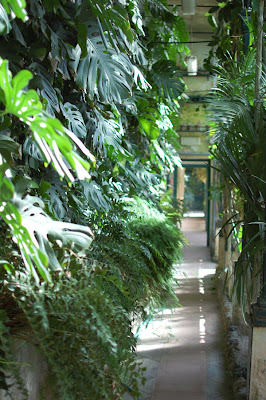Although a mere 30-minute drive from Vicenza, Padova to me was mainly Ikea, Decathlon, and a couple of Indian restaurants. I visited the city center more than two years ago, but it was at the hieght of summer, and the town mostly seemed large and quiet to me and nothing else. In addition, the overabundance of industrial areas and modern buildings that ring the city center made it look like a large and important city, but definitely one that made it comparable to say, Baltimore. Being the closest "big" city to my apartment, it was a place to run errands and nothing more. But on my second visit to the city center, armed with a better understanding of Padova, I was able to really appreciate the wealth of heritage the city has to offer.
Much like Bologna, Padova's greatest asset is its very old (second oldest in Italy, in fact) and very prestigious university, the students of which bring in an exciting atmosphere found only in places filled to the brim with young people both in pursuit of knowledge and having the naive confidence of knowing they already have it. Street art abounds, tiny bars and hidden cafes line streets, used book racks at every corner, kebap and pizza al taglio stands, and students in packs of four or five walk to and from classes. The most lively student area of the town are the blocks between Piazza dei Signori and Palazzo del Bo, where most students hang out in between classes. Be careful where you walk: don't get in the middle of a recent graduate getting his or her traditional humiliation by friends and family! This "humiliation" is mostly jovial, and the "victim" usually concedes wholeheartedly after being plied with copious amounts of alcohol. At night, especially on Wednesdays, the students migrate to the old ghetto, where the narrow streets are filled with bars overflowing with revelers.
In the middle of this area is the Palazzo Ragione, one of the most beautiful buildings in Padova. It is intended as the city's court, and is still used as a government building. (One side of the building is a hallway that links this beautiful to the ugly, retro-70s government building next to it.) Everyday, there is a farmer's market on the two piazze flanking the building, as well as the requisite cafes that line the portici surrounding the piazze.
The palazzo's interior is fully decorated with medieval frescoes depicting astrological figures and mythical characters. In the center of the main hall, under the wooden boat-hull roof, is a giant wooden horse constructed in 1466 for a public exhibition. With the horse's imposing structure, the roof--purported to be the largest unsupported roof in Europe--seemed bigger and more expansive. In contrast, at the further end of the hall sits a small stone block that used to be the town's dunce chair: white-collar criminals were punished by being made to sit on the chair for a day or two while their victims insult them throughout the duration of their punishment.
Away from the university area, towards the Prato della Valle are the town's biggest attractions. The piazza itself--the largest in Italy and one of the largest in the world--is worth a linger, especially when markets happen at the square. At the northern part of the square are the Orto Botanico and the Basilica of St. anthony of Padua.
The Orto Botanico, listed as a UNESCO World heritage Site, is the oldest botanical garden in the world, instrumental in the advance of the study of botany, ecology, chemistry, and biology. The collection was further enriched by plants collected from all over the world, brought in by Venice's connections in Asia and the Americas.
Even if you are only remotely interested in botany or gardening, the garden is peaceful to walk through, and it is interesting to see wild and common plants from the Americas labelled as if they are rare species.
The Basilica of St. Anthony of Padova houses the remains of the saint (simply called "il santo" in the city) and is the traditional location of pilgrimage for the dedicated followers of the saint. In the church's reliquary, one can see various parts of St. Anthony's body, from his arm, to his finger, to his tounge. For the squemish, the saint's tomb would suffice. For the not so religious, the church is still worth a look for the great art it houses, from paintings by Giotto and Altichiero to sculptures by Donatello. The nearby baptisery houses frescos by Titian.
Padova is a treasure trove, and it is a pleasure to finally be able to enjoy it without any preconceived ideas. It is an exciting place for learning, nightlife, student life, and art. However, I am still yet to cover the two best parts of Padova: Giotto's frescos in the Capella Scrovegni and the old university in Palazzo del Bo. Watch out for upcoming posts about these two buildings that made Padova one of the greatest cities in Renaissance Italy.








But you forgot to mention the great shopping there . . .I mean, beyond IKEA and sporting goods!
ReplyDeleteDana
PS. I'm not much of a shopper, btw.